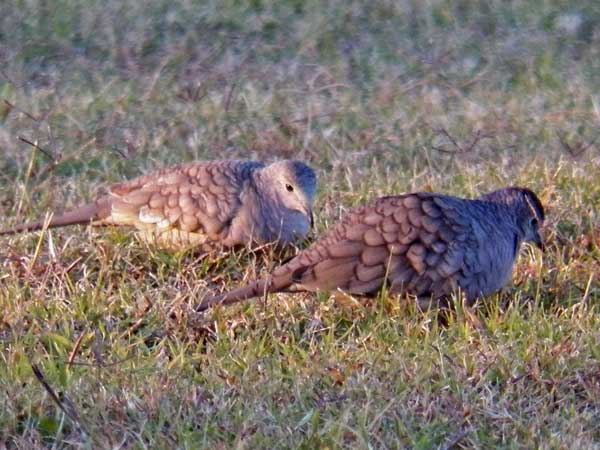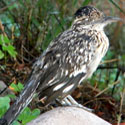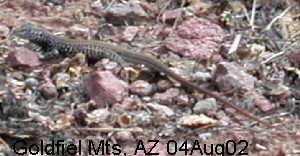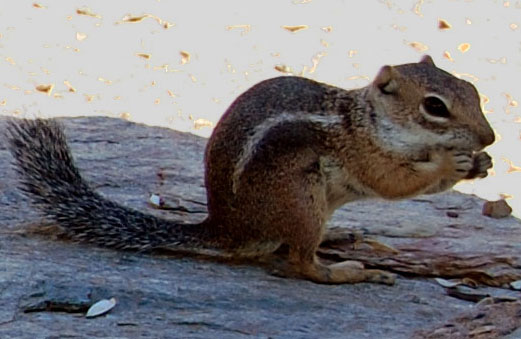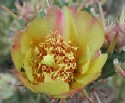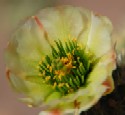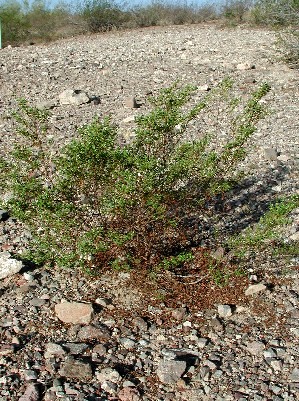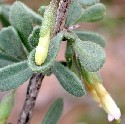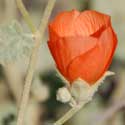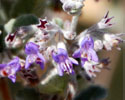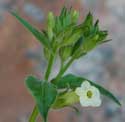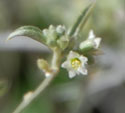Introduction
This is Glendale's only mountain preserve. It is located north of State Route Loop 101 via 59th Avenue. About a mile north on 59th Ave. there is low pass through the Hedgepeth Hills. Just before the pass is the main entrance to Thunderbird Park on the left. There are hiking trails here as well as ball fields and other recreational facilities including parking. Another parking area lies just northeast of the pass at 55th Ave. and Pinnacle Peak Rd. on the right (south). The trails are broad and easy to hike but the sharp-edged rocks require sure-footedness. There are several trails to choose from that will take you to various hilltops or onto perimeter areas.
Adobe Dam to the east catches the water draining down through Skunk Creek. A broad area of fine clay and silt has accumulated behind the dam. It is often nearly bare of vegetation: Typical desert plants cannot sustain the occasional flooding. Weeds predominate including those known to aggravate people's allergies.
The geology is predominately basaltic lava of early Tertiary age with a summit elevation of 570 m. The soil is very thin on the hills and so the few trees are diminutive. Bajadas are poorly developed. The picnic areas are situated within a well developed desert wash where there are many good sized desert trees including a number of Desert Hackberries, Blue Palo Verdes, and Ironwoods. The hackberries are highly attractive to wildlife, especially when in fruit ... mid spring and and again in early autumn.
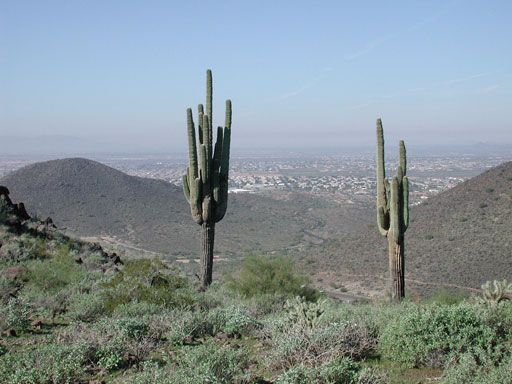
A pair of stately saguaro cacti frame a view of the northwest Valley, including Sun City and Peoria. The infamous brown cloud of particulate air pollution is visible on the horizon.
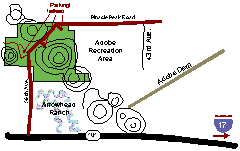
Thunderbird Park is located north of Loop 101 and west of I-17. Drive north on 59th Ave. from the Loop 101 exit. Google Map
The city of Glendale widened 59th Ave. which removed 40 some acres of desert habitat and added traffic and noise! An awareness march was held on Sat. 7/24/2004 at 8AM and was attended by nearly 200 people.


